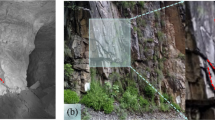Abstract
Load separation is the theoretical basis for the single specimen J form and the incremental calculation of J-R and J M -R curves. It is based on the assumption that the load can be represented as a multiplication of two separate functions; a crack geometry function and a material deformation function. Until recently, the main experimental basis for such an assumption was the approximate agreement between the experimental results of the single specimen J form and the energy rate interpretation of J in blunt notched bending geometries. The load separation assumption has been also implied in the growing crack records in order to develop the R-curve analysis. Both the crack geometry and material deformation functions were assumed to maintain their forms as the crack grows. Recently, an experimental study investigated the load separation in the test records of stationary crack specimens of different geometry, material, and constraint. The study showed that the load can be represented by a separable form for the entire plastic region except for a limited region at the early region of plastic behavior. Also, it was found that the load separation is not limited to a certain geometry, material, or constraint but it is a dominant property in the ductile fracture behavior of stationary crack specimens. The study also showed that the crack geometry function is a power law function. Hence η pl is a constant equal to the power law exponent of the geometry function.
The objective of this study is to investigate the extension of load separation to growing crack records. Sets of test records from three different materials are used in this study. For each material three or four precracked specimen test records and one blunt notched record are analyzed for the compact specimen geometry. The study will discuss the main condition to have a separable behavior in a growing crack test record. It will also construct the geometry and deformation functions for the materials studied, these functions are compared with those obtained from stationary crack records.
Similar content being viewed by others
References
J.R. Rice, P.C. Paris and J.G. Merkle, in Progress in Flaw Growth and Fracture Toughness Testing, ASTM STP 536 (1973) 231–245.
J.A. Begley and J.D. Landes, in Fracture Toughness, ASTM STP 514 (1972) 1–23.
J.D. Landes and J.A. Begley, in Fracture Toughness, ASTM STP 514 (1972) 24–39.
J.R. Rice, Journal of Applied Mechanics 35 (1968) 379–386.
J.R. Rice, Fracture, an Advanced Treatise, 2, H. Liebowitz (ed.), Academic Press (1968).
J.G. Merkle and H.T. Corten, A J-Integral Analysis for the Compact Specimen, Considering Axial Force as Well as Bending Effects, ASME Paper No. 74-PVP-33 (1974).
J.D. Landes, H. Walker and G.A. Clarke, Elastic-Plastic Fracture, ASTM STP 668 (1979) 266–287.
G.A. Clarke and J.D. Landes, Journal of Testing and Evaluation, JTEVA 7, No. 5 (1979) 264–265.
H.A. Ernst and P.C. Paris, Techniques of Analysis of Load-Displacemnt Records by J-Integral Methods, Nuclear Regulatory Commission, NUREG/CR-1222 (January 1980).
P.C. Paris, H. Ernst and C.E. Turner in Fracture Mechanics, Twelfth Conference, ASTM STP 700 (1980) 338–351.
J.W. Hutchinson and P.C. Paris Elastic-Plastic Fracture, ASTM STP 668 (1979) 37–64.
C.F. Shih, H.G. deLorenzi and W.R. Andrews, Elastic-Plastic Fracture, ASTM STP 668 (1979) 65–120.
H.A. Ernst, P.C. Paris and J.D. Landes, ASTM STP 743 (1980) 476–502.
H.A. Ernst Elastic-Plastic Fracture 2nd Symposium, Vol. I, ASTM STP 803 (1983) I-191-I-213.
M.H. Sharobeam and J.D. Landes, International Journal of Fracture 47 (1991) 81–104.
M.H. Sharobeam, J.D. Landes and R. Herrera, in ASTM 2nd Symposium on User Experience With Elastic-Plastic Test Methods, Lake Buena Vista, Florida, November 1989.
M.H. Sharobeam, ‘The Role of Geometry and Deformation in Ductile Fracture Methodology,’ Ph.D. dissertation, University of Tennessee, in progress.
J.A. Joyce, D.A. Davis, E.M. Hackett and R.A. Hayes, Application of the J-Integral and the Modified J-Integral to Cases of Large Crack Extension, NUREG CR-5143 (Feb. 1989).
A.P.Green and B.B.Hundy, Journal of the Mechanics and Physics of Solids 4 (1956) 128–144.
Author information
Authors and Affiliations
Rights and permissions
About this article
Cite this article
Sharobeam, M.H., Landes, J.D. The load separation and η pl . Int J Fract 59, 213–226 (1993). https://doi.org/10.1007/BF00012362
Received:
Accepted:
Issue Date:
DOI: https://doi.org/10.1007/BF00012362




